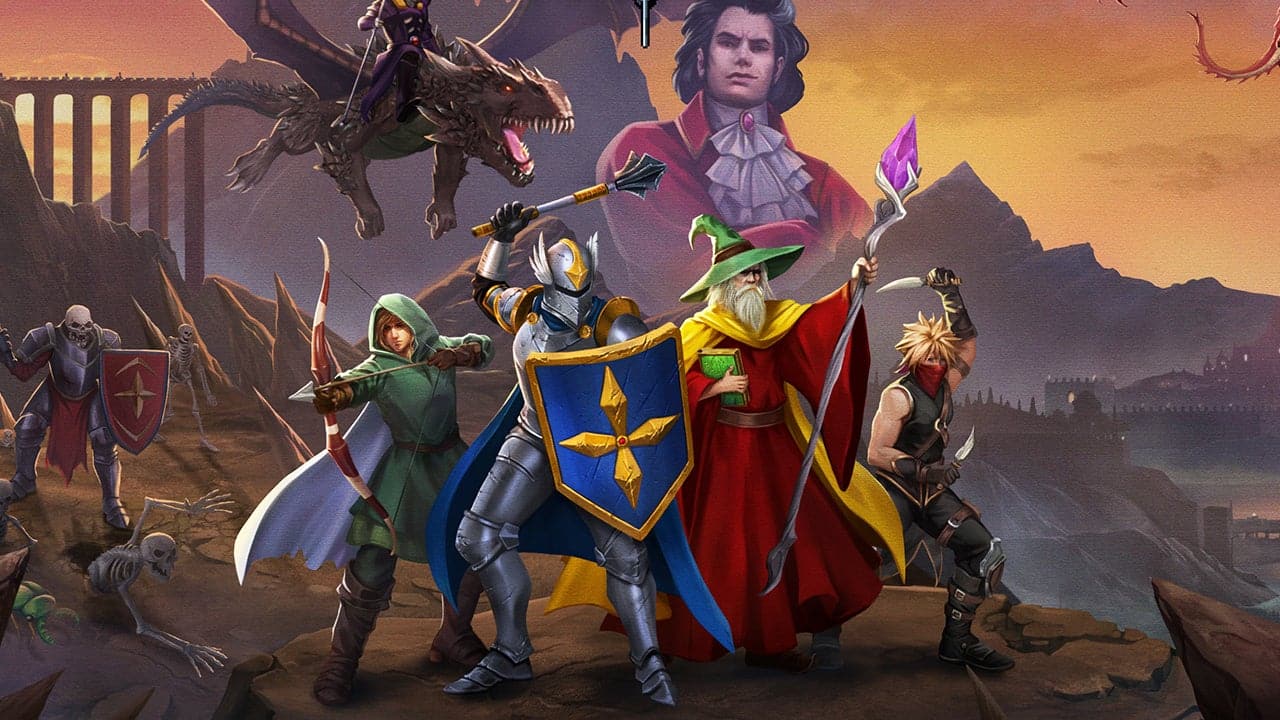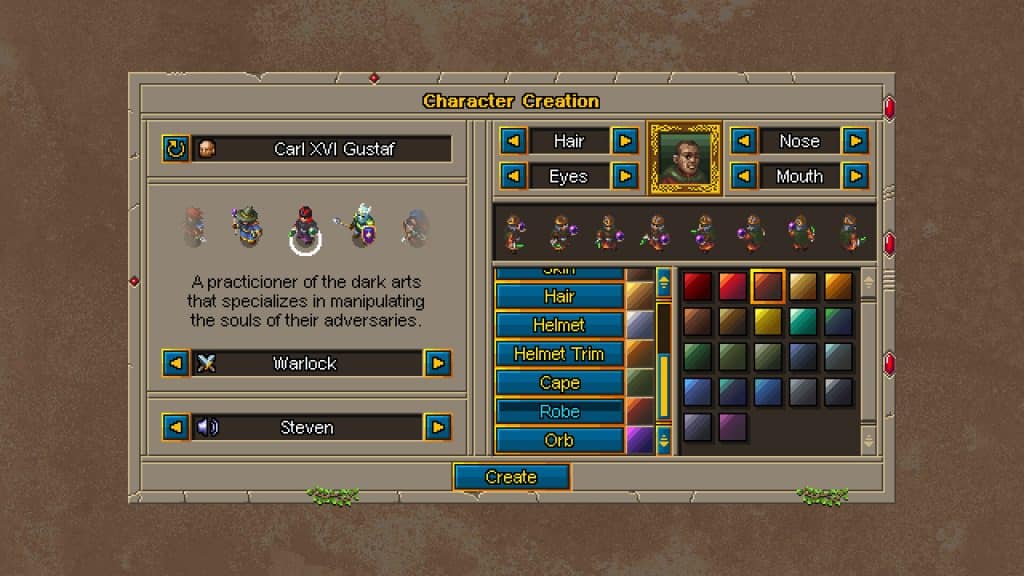

Crackshell is back with another round of retro hack ‘n’ slash gameplay and heaps of dungeons begging to be explored. Hammerwatch 2 brings together a band of customizable heroes for more twin-stick action-RPG dungeon crawling immediately following the conclusion of the first Hammerwatch. Although this sequel comes a decade after the first installment, its return follows five years after the release of Heroes of Hammerwatch, which was a rogue-lite detour for the series. Now, Crackshell is looking to reinstate the original mold but with an expanded, open-world design. With that in mind we’re left asking, does a bigger Hammerwatch make for a better Hammerwatch?
Whereas the first Hammerwatch was akin to the classic Gauntlet, Hammerwatch 2 aligns more with The Legend of Zelda: A Link to the Past. Overland exploration spills into multi-level dungeons teeming with baddies of all species. Attacking the veritable spread of hostile sprites results in offensive patterns quite reminiscent of that old-school outing with Link. Of course, Crackshell didn’t keep things that simple.
Each of the five available classes — Paladin, Ranger, Rogue, Wizard, and Warlock — come packed with their own abilities. Chosen classes begin as an apprentice and are able to steadily level into higher tiers for more effective skills. For example, in the early levels the Paladin can upgrade his shield to absorb a higher percentage of damage when blocking, add a lightning charge to his thrown hammer and even obtain the ability to recall said hammer like an 8-bit Thor.


Dropping points into individual stats as well as both active and passive abilities makes for an engaging progression system. It truly felt like my bite-sized tank was slowly becoming a more formidable force to thwart the efforts of the ever-lethal opponents waiting around the next bend. And that’s not even taking into account the additional character boosts provided by gaining new gear, which can be purchased from vendors outright with gold or found among the constant flow of loot dropping while pursuing any one of the countless quests. Whichever of the five classes you choose, melee or ranged, the advancement of each feels distinct and engaging in their flow.
While combat itself and the player’s growing combat prowess make for solid entertainment, the same can’t be said about the ambiguous systems surrounding that positive component. At a high level, the problem is that the game does a poor job of communicating with the player. Within moments of starting my journey, I had a lengthy queue of generic fetch quests lined up for my mini warrior. The rigid map and lack of any form of helpful objective markers, search areas, etc. made it feel as though a majority of my time in Hammerwatch 2 was spent wandering blindly across the admittedly charmingly detailed landscape simply hoping I’d stumble into something relevant.
Now, I have no issue with forgoing modern hand-holding and engaging in a bit of old-school navigation, but the lack of in-game context doesn’t end here. As I attempted to explore further out to see where my next objective might be, I crossed a shallow river and came across a group of enemies that looked quite similar to those back on the other side of the river. Despite their likeness, these lightly palette-swapped aggressors were infinitely more durable than their lighter counterparts. And yet at no point did the game provide any notice that I had stumbled into an area for which I was not appropriately geared or leveled; no enemy levels, skull icons or so on deterred me from arrogantly and ignorantly marching to my first (of soon to be many) death.
Whether you’re mapping out the overland or one of the lengthy dungeons, don’t expect much in the way of direction. Sure, there’s some fun to be had in having those near-aimless expeditions result in an exciting find, like a breakaway wall hiding a secret passage or helpful item. But the minimal instructions also makes it feel like much of the game devolves into trial and error. And this is especially true for those forging ahead on their own. Getting swarmed by a group of enemies who out-level you or attempting to take on a boss can be an extreme challenge when playing alone. Two (three, or four) heads are better than one in not only combat, but in covering more ground to more quickly determine the appropriate routes for the current quest.
This core reason is why I must state that the definitive Hammerwatch 2 experience solely exists in co-op. It’s simply not the same flow and pacing in a single-player environment, despite being an option. Difficulty settings exist and both health and mana modifiers can be enabled to ease some of the pain, but don’t expect enemy damage to suddenly be a non-issue — especially if you accidentally end up against an aggressive group of higher level opposition.
Cooperative play takes the hit-and-run guerrilla tactics of solo play into a more cohesive and collaborative approach to encounters. And the game is elevated immensely by having a couple friends along for the ride because of this. Taking on those dungeons clicks into place as I expect Crackshell desired when a combo of ranged, melee, physical damage, and magical damage all begin working in tandem to make short work of whatever soon-to-be-lifeless creature stands in the way. After pulling yourself out of a successful 30-60 minute dungeon delve, the sweet embrace of success may soon be stripped away as you learn that the progression of time, accompanied by a day/night cycle, has failed a quest which you had no clue was on a timer in the first place.
And so we return to the point about failed communication. I truly believe Hammerwatch 2 could be made a staple co-op outing for many aRPG fans out there — I’m sure those burned out Diablo IV players need somewhere to go for a bit — if it would simply provide better direction on its map and in its quest design. Leaving so much unspoken only leads to frustrating backtracking at best and avoidable deaths, which cost the player a percent of their gold, at worst.
Hammerwatch 2: Hammerwatch 2 broadens the scope of the inaugural installment by opting for an open-world design and leaning heavily into those Legend of Zelda: A Link to the Past vibes. While it certainly makes for a wealth of content to chew through, the experience has become blurred in this pursuit. Having a full party of four aids in obscuring some of these sticking points and it can be an absolute joy to hack, slash and bash across the lands with your buddies. But solo players will find less to smile about as the lacking clarity leaves them wandering aimlessly in an underutilized world wrapped in a narrative that's just as clouded. – Joshua
[Editor’s Note: Hammerwatch 2 was reviewed on PC and a copy was provided to us for review purposes.]
Epic Games, the maker of world popular battle royale game Fortnite, is making a new…
Dragon Age: The Veilguard's development has not exactly been smooth sailing, with reportedly such high…
In the wild video game remastering and re-releasing world, the freshly released Update 1.1 for…
The fourth entry in the legendary hack-n-slash series, Ninja Gaiden 4 is currently scheduled to…
The Nintendo Switch 2, which came out on June 5, has already sold over 3.5…
Blind Touch is an innovative experience crafted by an indie studio for PC players to…